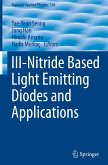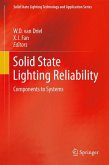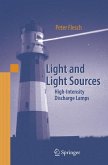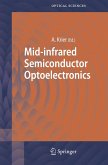Although it has long been possible to make organic materials emit light, it has only recently become possible to do so at the level and with the efficiency and control necessary to make the materials a useful basis for illumination in any but the most specialized uses. The early electroluminescent panels and cells provided reasonably bright light, but required high operating voltages, produced only a narrow range of colors, and had severely limited lifetimes. Recent developments, however, make it possible to manufacture organic light-emitting devices that are thin, bright, efficient, and stable and that produce a broad range of colors.
This book surveys the current status of the field. It begins with an overview of the physics and chemistry of organic light emitting devices by J. Shinar and V. Savvateev. It then turns to the design of molecular materials for high performance devices (C. Adachi and T. Tsutsui) and a discussion of chemical degradation and physical aging (K. Higginson, D.L. Thomsen, B. Yang, and F. Papadimitrakopoulos). A. Dodabalanpur describes microcavity LEDs, and Y. Shi, J. Liu, and Y. Yang discuss polymer morphology and device performance. Various aspects of devices based on polyparaphenylenes are discussed in chapters by N.C. Greenham and R.H. Friend; by Chayet, Savvateeyv, Davidoff and Neumann; and by S. Tasch, W. Graupner, and G. Leising. The book concludes with a discussion of devices based on pyridine-containing conjugated polymers by Y.Z. Wang, D. Gebler, and A.J. Epstein
This book surveys the current status of the field. It begins with an overview of the physics and chemistry of organic light emitting devices by J. Shinar and V. Savvateev. It then turns to the design of molecular materials for high performance devices (C. Adachi and T. Tsutsui) and a discussion of chemical degradation and physical aging (K. Higginson, D.L. Thomsen, B. Yang, and F. Papadimitrakopoulos). A. Dodabalanpur describes microcavity LEDs, and Y. Shi, J. Liu, and Y. Yang discuss polymer morphology and device performance. Various aspects of devices based on polyparaphenylenes are discussed in chapters by N.C. Greenham and R.H. Friend; by Chayet, Savvateeyv, Davidoff and Neumann; and by S. Tasch, W. Graupner, and G. Leising. The book concludes with a discussion of devices based on pyridine-containing conjugated polymers by Y.Z. Wang, D. Gebler, and A.J. Epstein








